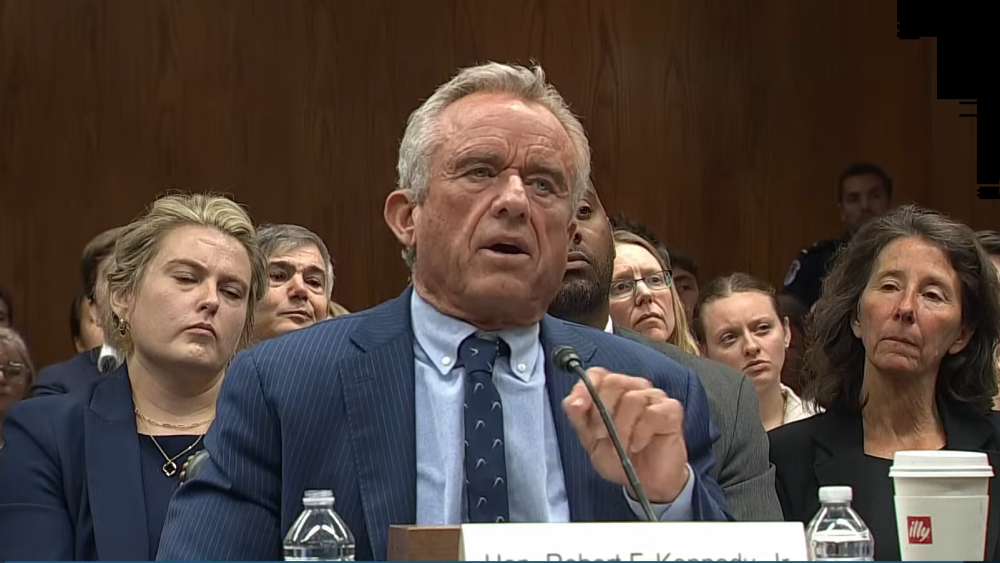Analysts expressed skepticism about plans detailed by Moderna’s R&D chief Stephen Hoge to trim research spending in preparation for the launch of up to 10 new products.
Moderna’s shares tumbled Thursday as executives revealed a plan to slow down the R&D engine that has cranked out respiratory products since the company rose to fame and profitability during the COVID-19 pandemic.
The biotech said that the changes will allow it to fund all existing plans without raising equity, breaking even on an operating cash basis in 2028—pushed back from 2026—with $6 billion in revenue.
But analysts were skeptical that additional funding wouldn’t be required. Jefferies had expected cash to be in excess of $6 billion to as high as $7 billion in the 2025 timeframe.
“The company believes they have sufficient cash to fund their plans to break even without raising additional equity, however, we believe this will remain a significant debate, and investors are unlikely to believe this until further credibility,” the firm wrote in a note to clients.
The investor day presentation followed Moderna’s announcement this week that it would cut annual R&D spend by $1.1 billion to reduce expenses by 2027, during which timeframe the biotech is also aiming to achieve 10 product approvals. But the information shared did little to reassure the company’s investor base, as shares slid 12% on Thursday to $69.68 at close, compared to $79.51 the day before.
William Blair analysts said in a note to clients that investors were responding to the shift in the company’s breakeven guidance from 2026 to 2028. Another factor was the news that Moderna’s melanoma vaccine mRNA-4157, developed in partnership with Merck, was unlikely to receive accelerated approval as an adjuvant treatment for recurrent disease.
Moderna Navigates Post-COVID Era
Moderna, which is headed by CEO Stéphane Bancel, reinvested the $20 billion windfall it got from the COVID-19 pandemic back into its pipeline. Now, the company is faced with the fruits of that labor—and the challenges of launching multiple medicines at once, President Stephen Hoge, who leads all R&D for the company, said during the investor presentation.
“It is a really daunting task, three launches a year on average for three years in a row, and we recognize that we have to show we can make progress on those launches before starting the pipeline and the engines again,” Hoge said.
This year, Moderna has achieved approvals for its updated COVID-19 shot and its respiratory syncytial virus (RSV) vaccine mResvia. Those approvals are all in Moderna’s respiratory vaccine portfolio, which was able to tap into learnings from developing the COVID-19 vaccine called SpikeVax, Hoge said. Studies for those infections can also be conducted quickly because they are seasonal, he explained.
Moderna plans three additional product submissions this year, using a priority review for one to speed up the process. The company will seek first approvals for next generation COVID-19 shot mRNA-1283 and a flu-COVID combo called mRNA-1083, which yielded positive Phase III data in June. It will also request a label expansion for mResvia to expand the eligible population.
Moderna has also been working to diversify the pipeline that will define the biotech’s next era. Key programs going forward will be from the latent vaccines portfolio, such as the Phase III assets mRNA-1403 for norovirus and mRNA-1647 for cytomegalovirus.
The goal has been for Moderna to start seeing substantial non-respiratory approvals in the 2026 timeframe, Hoge said this week. Those programs come from Moderna’s latent vaccines, rare disease and oncology portfolios.
“It is an incredible body of work. And I hope you can see why we’re proud of the launches, but also why we’re daunted by the commercial challenge of launching all those products really just in the next three years,” Hoge said. “And that causes us to want to actually start to pace ourselves.”
Moderna’s Pipeline Cuts
Among the changes announced this week, Moderna plans to be more judicious about what rare disease and latent vaccine assets advance into pivotal development “until we’ve shown we can get these out the door,” Hoge said.
The company will also slow down the respiratory spending that became the focus of the initial COVID-19 funds, with no new pivotal trials expected to begin for these products in the 2024–2025 timeframe, Hoge said.
“As that naturally sunsets, there will be a reduction in our respiratory R&D investment. We’ve succeeded in that strategy,” he said.
Moderna also trimmed around the edges of its pipeline. In respiratory, a preclinical endemic human coronavirus vaccine program called mRNA-1287 was removed and an infant RSV program called mRNA-1345 will not advance past an existing Phase I trial. In oncology, Moderna has no further development plans for a KRAS antigen-specific therapy called mRNA-5671, and the triplet XXXX therapy mRNA2752 is being shuttered. Finally, the cardiovascular relaxin program mRNA-0184 will wrap up after Phase I.
For this year and next, Moderna’s average annual R&D spend is expected to be $4.6 billion. That number will drop to $3.8 billion for 2026 through 2028. Overall, that means spending will go from an expectation of $20 billion from 2025 through 2028 to $16 billion. The R&D reductions will begin next year and “hit its full scope” by 2027, Hoge said.
The commercial respiratory franchise is expected to be profitable this year, with an expected $3 billion to $3.5 billion sales, but that revenue will not allow the company to break even until 2028.
Both William Blair and Jefferies expected to see the profitability forecast pushed out, so the news was not much of a surprise to them. But both said the update left investors unconvinced.
“With the stock trading down 18% intraday and a full 45% since the 2024 full-year product revenue guidance revision on the second-quarter earnings call, we believe Moderna is quickly becoming a show-me story to make this an investable story for new money again,” the William Blair analysts wrote.






